One of the things you notice about petroglyphs after you see a few of them is their sameness. This is not a bad thing, but there seems to have been an accepted way for their artists to portray the subject matter regardless of the geographical location. That has always seemed odd to me. Did they have an art school where young stone drawing artists were sent to learn the proper way to draw Bighorn Sheep and then returned home to their tribe to chronicle the information in the proscribed way ? The subjects are all approximately the same physical size on the rock, you never see close-ups of a Bighorn sheep’s head for instance or any variation for that matter, yet these images may be several hundred miles apart, a really significant distance when you consider they walked everywhere and a ten mile jaunt would be huge distance to travel for the average inhabitant to make unless they were relocating. It might be the origin of a guild system where the resident artist took a young apprentice under their tutelage and soundly drilled the basics into them so there wouldn’t be any variation and the information from the image would then be available to anyone seeing it. None of this three-legged sheep with one horn business to confuse the viewer. But even if this happened why didn’t different schools of art develop. That would be a natural condition. One guy who drew the legs a little longer than his teacher so that eventually you would have the long legged Bighorn school of art group and then a form of regional art, but this never seemed to have happened. I know that in Japan the art of Ukiyo-e or wood block printing was taught in this way, a guild system, and the young students were shown the proper way to draw just one line that would be the start of a face or hand, no deviation, do it exactly as shown or you ran the risk of getting your rice bowl broken and you heaved out into the street. Unfortunately I don’t have the answers but I think it’s high time we perfected this time travel thing so that we could go back and get some of these mysteries solved. Deep thoughts, I know, and its a Monday too. In the meantime, questions or not, I can enjoy the beauty of these ancient images for what they are, and share them with you.
Tag Archives: petroglyphs
Colors, Patterns and Textures in the Southwest
One of the incredible perks in having a job like mine is you get to see things like this on a regular basis. Sure there are many times where you don’t have the extraordinary light or the stupendous subject matter but then a lot of the time you do. And all you have to do is look at it and take it’s picture. How cool is that? Pretty damn cool actually. This is a shot of Navajo mountain from the Bryce area. What you don’t see in that picture is that it is a little after 6 in the morning early in the spring and it is very cold, like wearing two down jackets cold. At the time I took this it seemed much less glamorous than it does now looking at the end result. Now if that sounds like whining I don’t mean it to, there are just some facts of life about this job that aren’t apparent by looking at the photograph. Frozen fingers and numb toes aside this is a great job and I don’t ever want to stop doing it. I may wear three down coats next time however. And some gloves.
Colors, Patterns and Textures is the name for this post and it has been the hardest to put together because of the difficulty in choosing images for it. This presentation could easily be several thousand pictures, if not more, long. The reason it isn’t is because I know that as much as you like looking at gorgeous images I’d lose you at about six hundred so I’ve decided to abbreviate this post and repeat it with different images every so often. This is a wall at Aztec Ruins National Monument built by the inhabitants when this place was occupied. Now whoever designed and built this wall knew what beauty was about. There is no architectural reason to use a row of the most beautiful blue colored rocks here but after seeing it could you have used anything else?
The color of the sand, the texture, the play of shadows on the ripples of this small section of the dunes in Monument Valley is every bit as intriguing as the buttes, towers and monolithic rock formations that make up this world Heritage place.
Simple patterns can be visually satisfying. This tree against an unadorned wall in Santa Fe has a zen-like attraction. The intense colors, while arresting in their contrast, can have a soothing effect and show that a small piece of the total view can be more rewarding than showing the whole picture (so to speak).
While similar in composition to the image above, this scene also taken in Santa Fe, shows a more muted color palette. Same type of view but different light and time of day. You could stand in front of a composition like this for days and never take the same image twice.
While walking through the dunes in Monument Valley after watching the sunrise you see all the details and patterns of this spectacular country begin to emerge. A desert newspaper recording the comings and goings of the creatures of the night. The tracks of a small mammal are crisscrossed with trails of insects and the morning light turns the color of the sand to a deep rich red. I take a lot of pictures but I think I take more of them here than any other place.
You can begin to understand why artists like Georgia O’Keefe painted the subjects she did when you come across a pattern like this one momentarily displayed in the sand. I say momentarily because the next breeze to blow through here will erase this work of art in a heartbeat. That is unless you take a picture of it.
Other patterns are created by man and will last for centuries. These petroglyphs are on a cliffside in Capitol Reef National Park.
Texture plays a large part in my selection of things to shoot. Here the frozen sand has been turned to rock and although it looks like momentary waves in a sand dune it is here to stay. This is Antelope Canyon in Arizona and this dune is nearly a hundred feet under ground. The light comes from an opening in it’s ceiling that runs the length of the canyon.
Waves of stone. How were they frozen in time? It certainly looks like that was what happened but this scene was slowly created over eons by the water that occasionally pours through this canyon. It is mind numbing to think of how long this must have taken. The result however is etched forever in my memory.



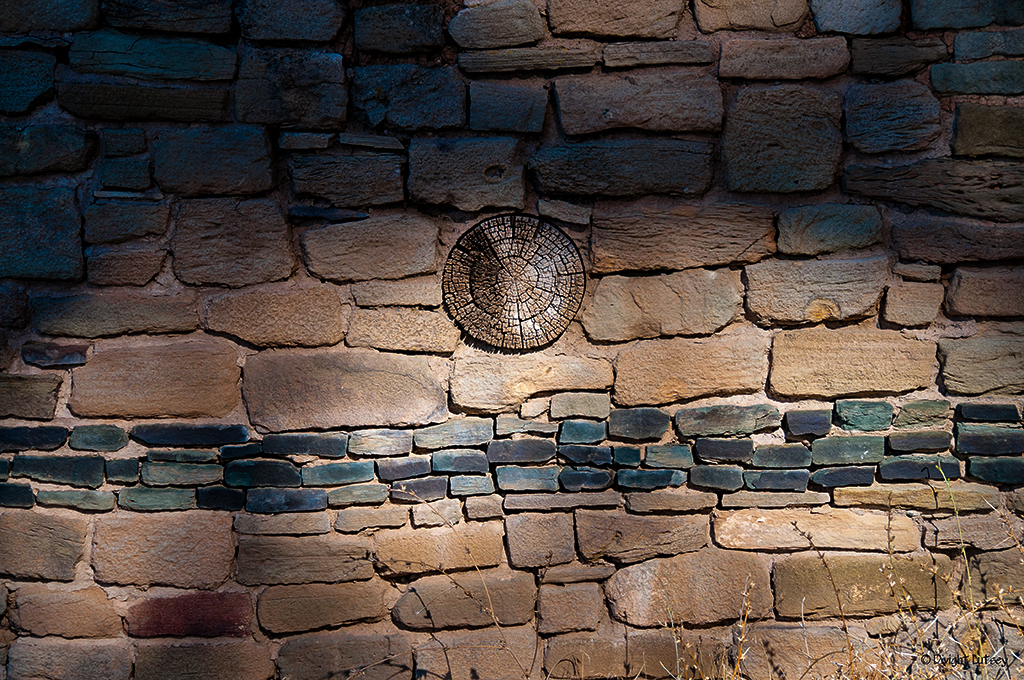
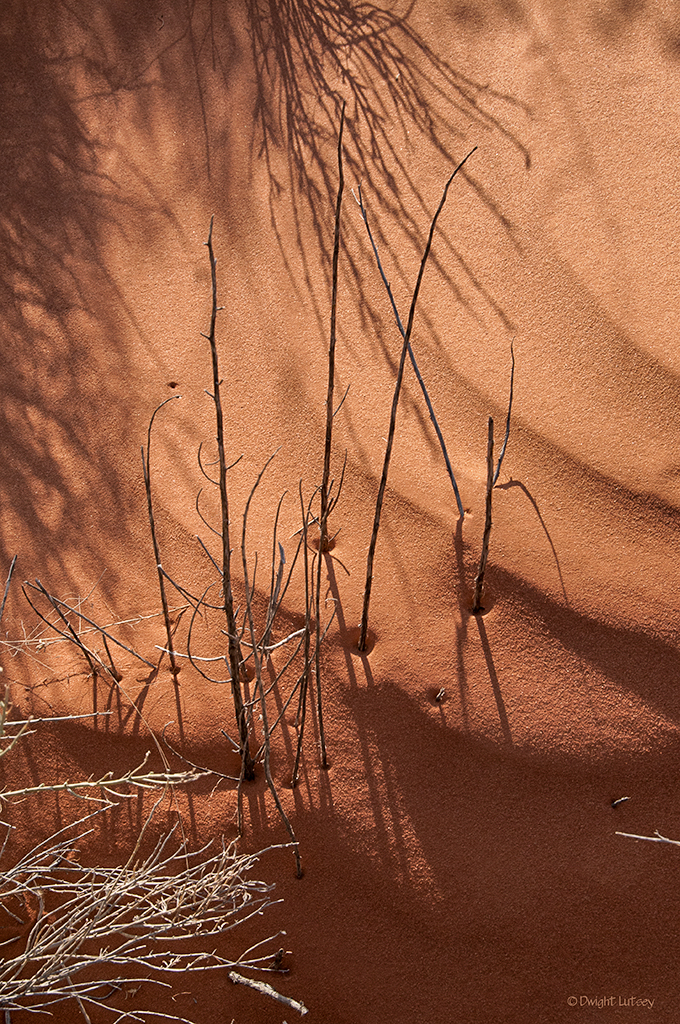
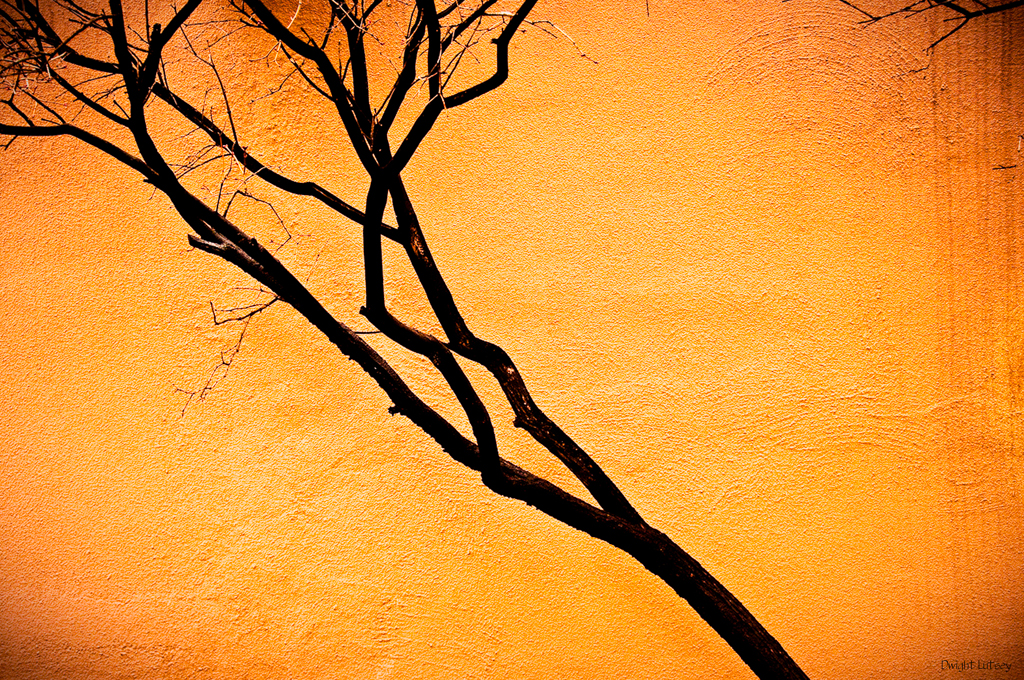
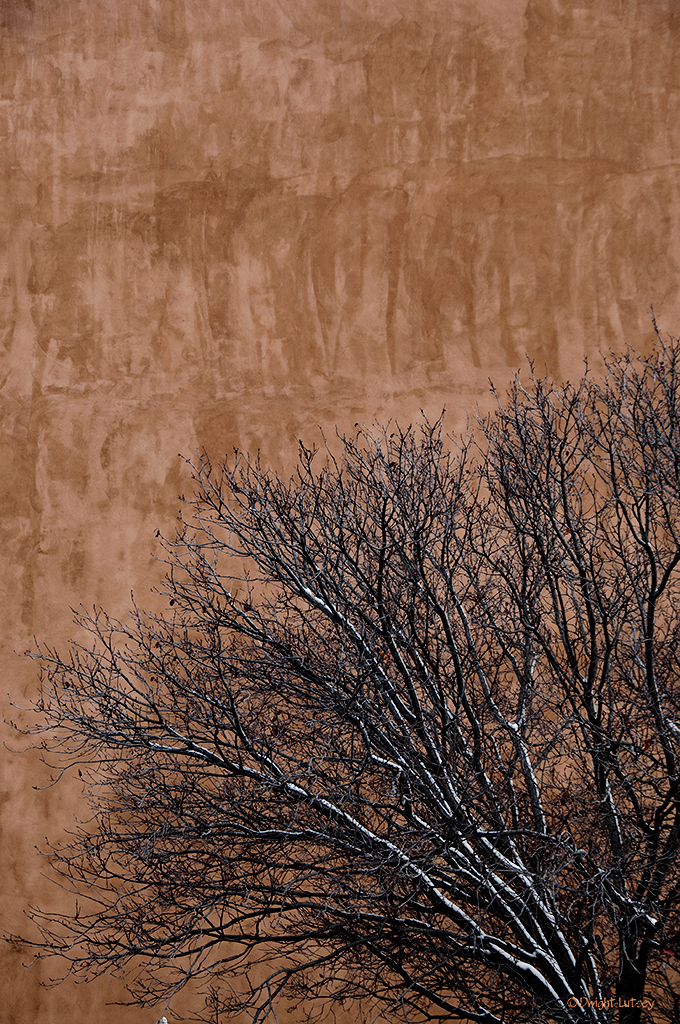
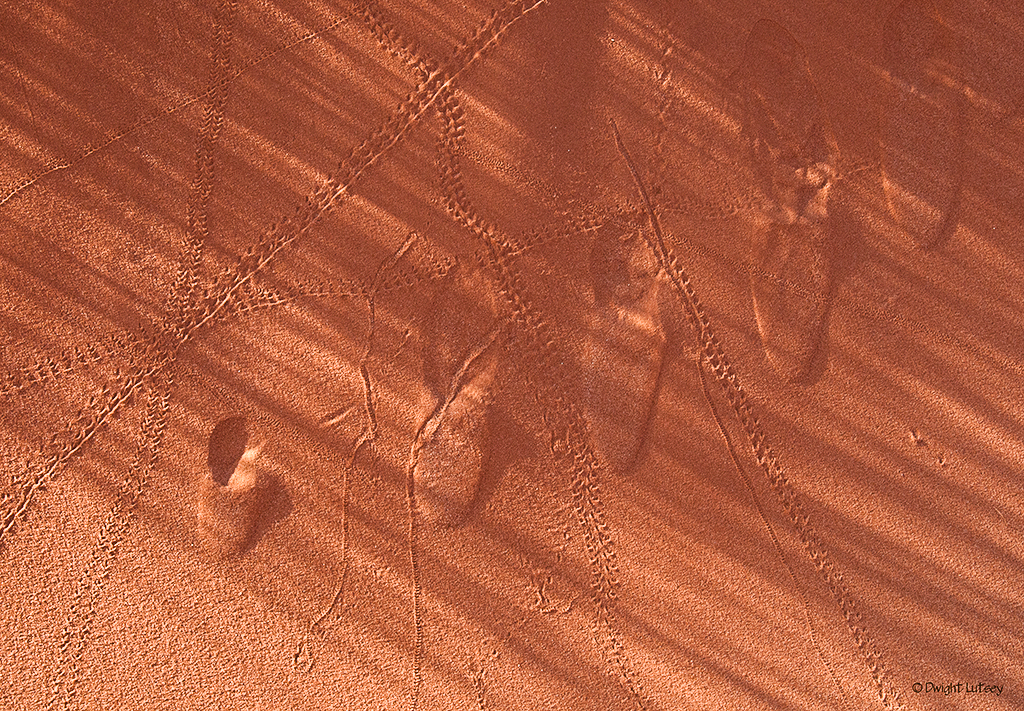
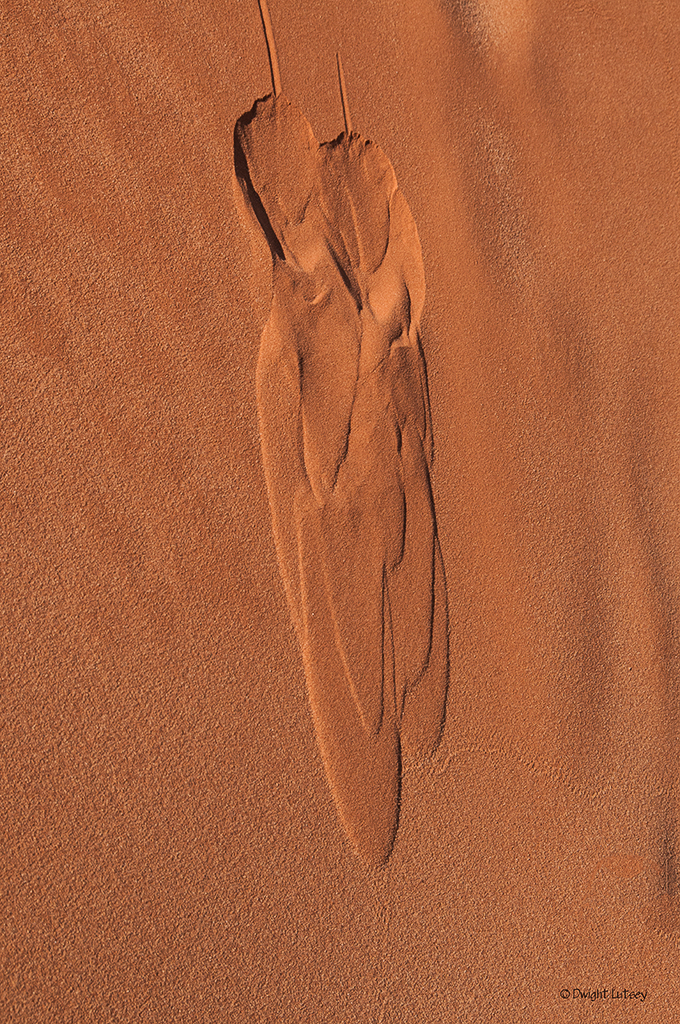
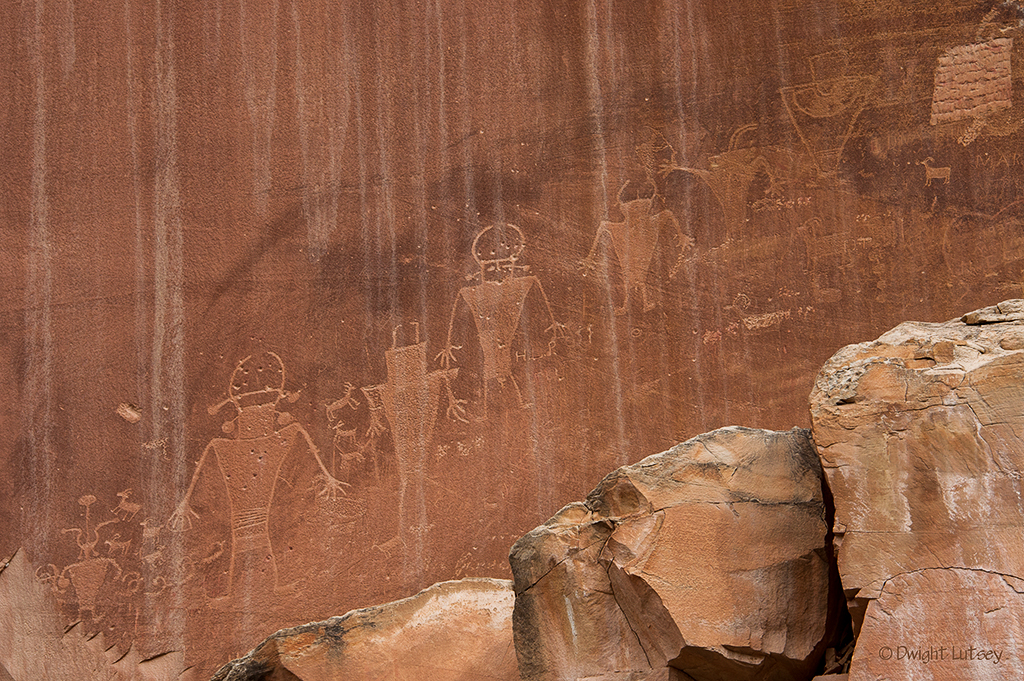
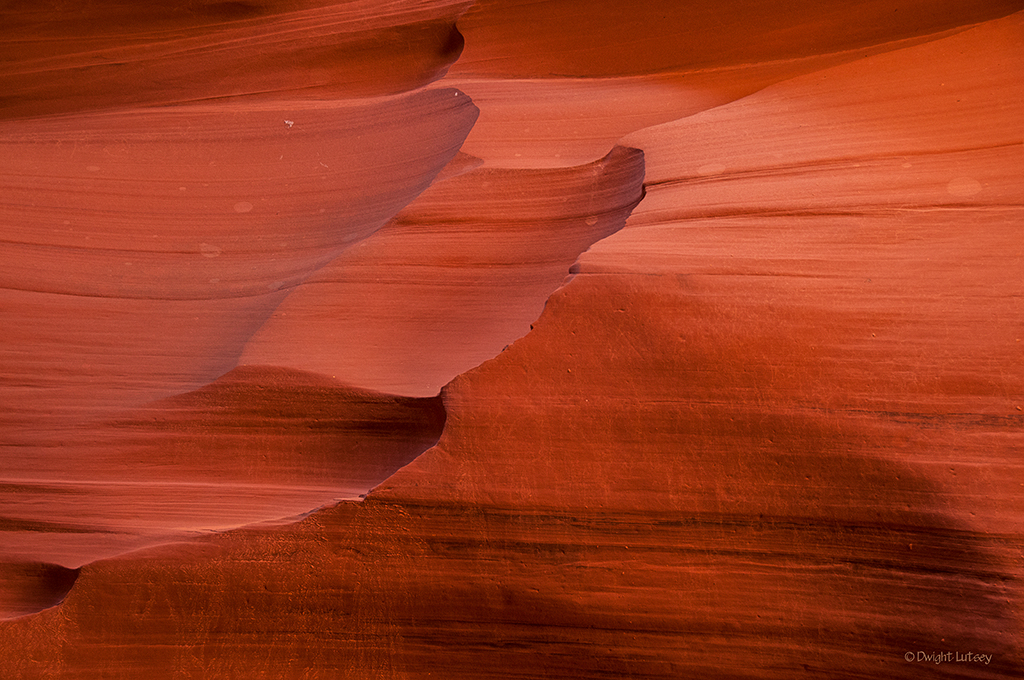
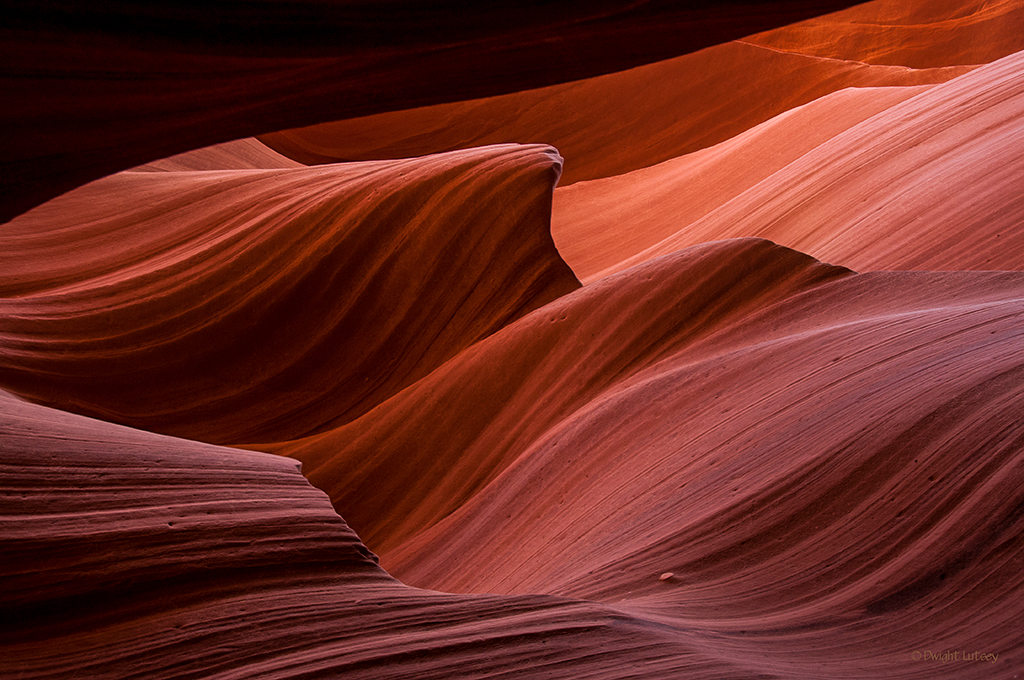
You must be logged in to post a comment.